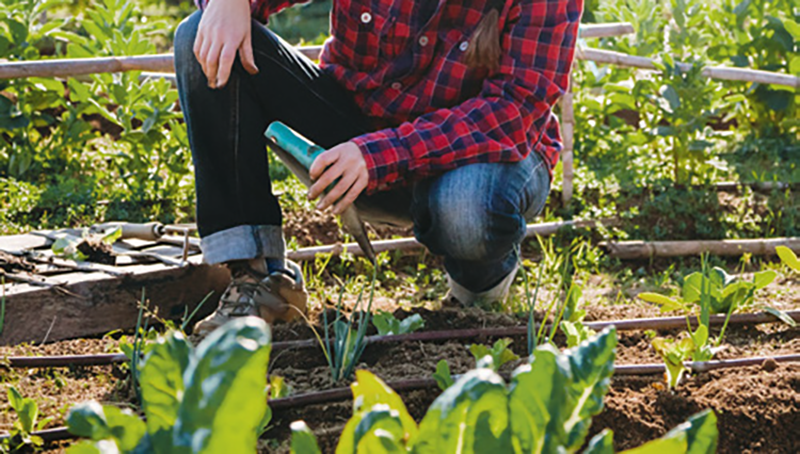(This following article by Tracy Lawler, President of JGL Foodservice Consultants was printed in the National Association of College and University Food Services Campus Dining – Spring 2021 issue)

What are some of the top trending methods to generate campus and community engagement with an on-site dining operation? Students today are seeking shared values, authenticity, and transparency. Campus dining can support these efforts and forge a deeper connection within the community. We all know breaking bread together is powerful. A well-designed and operated campus dining program that reflects the student body interests can enhance student life as well as the institutional reputation among prospective students, alumni, and donors.
As food service consultants who manage multiple RFP processes annually on behalf of our clients, we are often struck by the differing decision-making processes we encounter across sectors. Higher education accounts, in the last five to ten years, have increasingly valued campus and community engagement initiatives as a factor when choosing a food service vendor. Self-operated accounts are, of course, judged by the same criteria and should be incorporating campus and community engagement efforts into their ongoing operations as well.
If student values, goals, and concerns with regards to engagement are not considered, higher education institutions may find themselves in a position with negative student press, protests, or even sit-outs. Hot button topics such as food insecurity, local participation, sustainability, food recovery, social justice, and engaging students on multiple levels need to be addressed in an operation seeking to create campus and community engagement. Below we detail some of the most resonant efforts to create campus and community engagement from recent client work.
#1 FOOD INSECURITY
This has emerged as one of the most important elements to student populations in the last few years. In 2019, the Hope Center issued a study1 estimating 48 percent of community college students and 41 percent of four- year university students who responded to the center’s survey were food insecure. Creative and sensitive solutions are needed as some food insecure students do not want to be identified as such.
The most effective and resonant solutions we have seen are programs that allow students to donate swipes, points, or dining dollars to a food insecurity fund managed by a university department. the higher education institution must contribute as well to ensure adequate funds, and those grappling with food insecurity can create an account and download access to the funds or simply access swipes at point of service.
Finally, food pantries offering non-perishable pantry and grocery items have become a standard on many campuses. there are no existing key performance indicators we are aware of to measure the success of such initiatives. We recommend institutions develop a tracking methodology that seeks to improve upon usage and engagement semester over semester. A client in the northeast, as an example, reported to us that in the fall of 2018 their emergency food swipe program had 137 swipes. By the following semester, usage had increased to 538 swipes—almost a 300 percent increase.
#2 FOOD RECOVERY
Contributing to the elimination of food insecurity, reducing waste, and benefiting the environment, food recovery efforts are an important campus and community initiative. Food Recovery Network, with more than 230 chapters in 46 states and Washington d.C., is a leading grassroots developed nonprofit addressing campus food recovery efforts. Communication of an individual campus’s contribution to the efforts via newsletter, website, email blast, or text message is an effective way to generate more student interest and anticipation. the creation of a food recovery program on a campus is a great way to develop community between student volunteers and the onsite dining staff.
#3 SOCIAL JUSTICE AND DEAI INITIATIVES
We believe diversity, equity, accessibility, and inclusion (DEAI) is poised to become very important in campus dining communities. In the last year, there has been a tremendous increase and focus on DEAI initiatives across all sectors of business. In recent RFP processes we have managed, students have wanted documented details of prospective vendors’ social justice and DEAI efforts. We believe self-operators will increasingly be tasked with demonstrating their initiatives separate and apart from the institutional initiatives on the whole.
#4 PURCHASING LOCAL
The origin of our food continues to be of great interest in dining operations across all sectors. Purchasing locally is increasingly becoming a standard of operation. Most operations implementing local purchasing start with a minimum goal of 20 percent. We recommend ongoing efforts to increase that percentage every year. Local purchasing efforts can be combined with campus-wide events such as farmers markets featuring local purveyors to stimulate student interest in the offerings. Another great method to generate student engagement is to create a method for students to suggest local farmers and other vendors for consideration. Featuring the inclusion of such vendors as a student-initiated relationship will contribute to community building efforts.
#5 COMMUNITY GARDEN
For those institutions with acreage or even a roof suitable for a garden, the development of a community garden that mixes “town and gown,” can be a great community building effort. the community garden can utilize student and community volunteers and serve to build a bridge between the institution and its local community. One institution we know of in the northeast successfully launched a Community Supported Agriculture program with over 600 community members.
#6 CAMPUS EVENTS
Virtually every higher education institution has deeply rooted events involving food. Midnight Madness during finals week, pajama breakfasts, and the like create ongoing opportunities to connect with students, alumni, and donors. the combination of traditions and food continues to be an enduring and powerful force.
The six efforts we detail above are meant to spark creative thinking among self-operators and vendor environments alike. Student engagement and participation in all of these efforts is the beginning point for creating successful initiatives that foster campus and community engagement.

